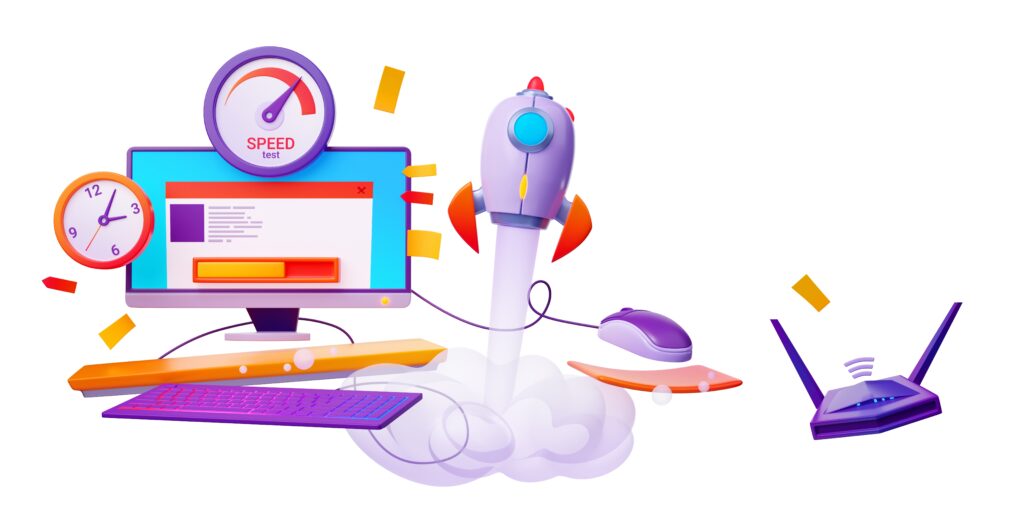
If Quality of Service (QoS) is a function of the network, and Quality of Experience (QoE) is a perception of the service by an end user, how can an operator effectively do both?
The answer comes from two solutions:
- Coordinated network provisioning of QoS in all forms of access network technology; and
- Ongoing passive and active observability of reference traffic for QoE scoring in DOCSIS®, PON, and Fixed Wireless networks.
Cable Operators have tremendous QoS available in Low Latency DOCSIS (LLD) networks, which arrived fully in DOCSIS 3.1 modems with the inclusion of Active Queue Management in addition to DOCSIS 3.0 Target Buffer control available for some time.
The Cable Operator may deploy Low Latency Low Loss and Scalable Throughput (L4S) at both the DOCSIS MAC layer, as well as the network presentation layer above, preserving application marked traffic priorities end-to-end when matching those modems with a Low Latency DOCSIS CMTS with aggregate service flow handling, Proactive Grant Scheduler, and dual queue support.
The result is a huge lift in subscriber traffic experience when non-queue-building traffic, such as AR/VR and eGaming are managed within their own forwarding queue. Separating the queues helps to avoid TCP windowing behavior and effectively smooths the delivery of near real-time experiences. Meanwhile, traffic that gracefully handles queue-building, such as over-the-top video, may easily continue in the ‘classic’ queue.
These AR/VR, eGaming, and IP Video use cases follow the subscriber, and therefore must be equally supported across DOCSIS, PON, and Fixed Wireless. 
ITU PON networks have similar Type of Service (ToS) classification with a given Traffic Container (T-CONT) and relationship to Dynamic Bandwidth Allocation (DBA) resource grants. Hierarchical QoS for downstream traffic management exists either in the optical line terminal (OLT) or as part of a Broadband Network Gateway (BNG).
Similar progression of classification and resource allocation occurs for Fixed Wireless Access. This raises the need for operators of multiple access networks to have a common or coordinated network provisioning for QoS.
Assuming all QoS has been configured for each network, how does an operator determine the QoE based on application of various QoS tools, and how does the operator determine Quality of Experience over time?
We believe the answer comes in the form of two collection and scoring architectures:
- Large-Scale Measurement of Broadband Performance (LMAP)
- Broadband Forum Quality Experience Delivered (QED)
The LMAP framework consists of a controller, collector, and measurement agent, resulting in the ability to generate and measure traffic performance across the operator network for analysis. This provides an understanding of latency, jitter, and reliability under load.
The QED framework works in a similar manner as LMAP, using probes in the network and traffic generation under load sampling. QED has a higher focus on overall quality at the user experience level with support of traffic reflector agent operation on the customer gateway itself, working with a central probe such as a Broadband Network Gateway serving the subscriber.
Low latency and QoE for all access networks are possible combining all the following:
- Common network provisioning for QoS in the access network
- A reference traffic telemetry pipeline to unify LMAP and QED collection frameworks into a common end to end experience
- QoE score reflecting the subscriber traffic end-to-end.
We hope you can join us for our panel session at ANGA COM 2024 in Cologne where we will be joined by Vodafone, Cox, and Intel discussing Low Latency in Fiber and HFC Networks.
Chris Busch will be speaking about “Low Latency in Fiber and HFC Networks” at ANGA COM on Tuesday, May 14, at 2:30 p.m./14:30 local time in Room 2.
Back to all resourcesGet Started with Vecima
We help our customers evolve their networks with cloud-based solutions that deliver ground-breaking speed, superior video quality, and exciting new services to their subscribers.
Contact Us

